This is a vehicle that undercuts its competition by tens of thousands of dollars, but according to the brand selling it, it over delivers on spec, safety, tech, and all of the important things that business buyers want. It’s the all-new 2021 LDV Deliver 9.
This all-new large van - known as the Maxus Deliver 9 in some other markets - is designed to go head to head against budget van rivals like the Renault Master and Fiat Ducato, while also aiming up against the VW Crafter, Ford Transit, and the local sales hero, the Mercedes-Benz Sprinter.
In fact, LDV Automotive Australia made quite the song and dance about the Deliver 9’s credentials against the Sprinter at the new vehicle’s digital launch. The LDV brand, which now considers itself a household name in Australia, has pretty huge aspirations for this new model in the large van segment.
There are cab chassis models and a choice of 11- or 14-seat bus, too, as well as different wheelbase and height vans - and because they’re expected to be the biggest sellers, it’s the van’s we’re chiefly focusing on in this review.
LDV claims the Deliver 9 is “61 per cent cheaper” than the Sprinter despite sharing a number of common characteristics and attributes. We’ll cover more on the pricing and specs in detail in this review, but also important aspects like ownership, driving, interior space and cabin smarts, safety and powertrains.
LDV Deliver 9 2021: LWB High Roof + Option Pack
| Engine Type | Diesel Turbo 4, 2.0L |
|---|---|
| Fuel Type | Diesel |
| Fuel Efficiency | 0.0L/100km (combined) |
| Seating | 3 |
Does it represent good value for the price? What features does it come with?
If the thought bubble “LDV” comes to your mind, there’s a good chance the next thing to pop into your head will be “budget”. The brand has established itself as a price player locally, and the new LDV Deliver 9 range is no exception.
In fact, the costs of the LDV Deliver 9 easily undercut all of its main rivals in the 3.5-tonne and above class. As mentioned above, the company claims it is 61 per cent cheaper than the Mercedes-Benz Sprinter, while the VW Crafter, Renault Master, Ford Transit and Fiat Ducato are all well over the odds in terms of the price list.

Below there is a table of the models in the range, including a price for ABN holders, which is a drive-away price direct from LDV, as well as an MSRP/RRP for those who aren’t ABN holders, and even that’s a driveaway price. There are no on-road costs to concern yourself with here. And the deals? They’re strong.
LDV DELIVER 9 RANGE | |||
Body type | Transmission | Driveaway (non-ABN) | Driveaway (ABN) |
Van - Mid Wheel Base / Mid Roof | Automatic | $43,148 | $40,990 |
| Van - Long Wheel Base / Mid Roof | Manual | $42,095 | $39,990 |
Automatic | $44,276 | $42,490 | |
| Van - Long Wheel Base / High Roof | Manual | $44,200 | $41,990 |
Automatic | $46,831 | $44,490 | |
| Cab Chassis - Long Wheel Base | Manual | $42,095 | $39,990 |
Automatic | $44,726 | $42,490 | |
11 Seat Bus - Mid Wheel Base / Mid Roof | Automatic | $55,779 | $52,990 |
14 Seat Bus - Long Wheel Base / Mid Roof | Automatic | $57,884 | $54,990 |
14 Seat Bus - Long Wheel Base / Mid Roof | Automatic | $59,990 | $56,990 |
Standard equipment for the Deliver 9 2021 model range is quite decent, considering that price list.
Fitted on all models is: 16-inch steel wheels with a full-size spare, side and rear steps (when doors open), a sliding passenger-side door and 180-degree barn doors, eight cargo area tie-down points, rubber flooring in the cargo area, LED lighting in the cargo area, a 10.1-inch touchscreen multimedia system with Apple CarPlay smartphone mirroring (no Android Auto) and Bluetooth phone and audio connectivity, two USB ports, and a 4.2-inch multifunction display with digital speedometer.

There are also heated electric front mirrors, air conditioning (manual), a multifunction steering wheel, cruise control (adaptive cruise on auto models), a three-seat layout for van and cab chassis models (two-seat passenger bench with under seat storage), eight-way adjustment for the driver’s seat, rear fog lights, halogen headlights, a ‘wide view’ rear overhead reversing camera, and plenty of advanced safety technology.
The safety spec includes auto emergency braking (AEB), lane departure warning (LDW), rear parking sensors, adaptive cruise control (auto models), and more. Read the safety section below for more detailed information.
Unlike many of the van’s rivals, there aren’t too many options available yet. You can’t opt for side glass glazing, or a driver’s side sliding door, or a tailgate, or a bulkhead or mesh steel protection cage. LDV Australia says it will offer these options later in 2020.

There is, however, an optional pack that adds handy wider-opening barn doors (236-degrees), as well as keyless entry, push-button start, and a blind-spot monitoring system with lane change assist. It costs $1500.
Thinking about colours? Don’t get ahead of yourself. There’s only the choice of Blanc White or Pacific Blue ($500 extra). There’s no red, green, yellow, grey, silver, black or brown option, because LDV reckons customers will wrap their van anyway, if they want to brand it with their company colours.
For a little bit of context on the pricing, the entry-level Deliver 9 auto undercuts the most affordable Toyota HiAce diesel auto while offering customers considerably more cubic metres for their money. More on how it sizes up below.
Is there anything interesting about its design?
You might think that it’s just another box on wheels. You’d be right. But there is something to be said for the appearance of the new LDV Deliver 9, which is considerably more modern than its predecessor, the V80, and well-and-truly more contemporary than the G10 van that slots in below it.
In fact, the Deliver 9 has a look that bears a bit more of a resemblance to the other, more desirable models in the brand’s range, with the graphic elements of its front end offering an at-a-glance family look when compared to the D90 SUV, in particular.

It isn’t gorgeous. But it is a confident looking van, with a bold and broad grille, those of-the-moment moustache-style flicks at the lower edges of the bumper, and - as many commenters have already stated - a Ford Transit-esque overall appearance.
Workers will appreciate the side body moulding that runs along the length of the body, which should, in theory, limit paint damage if things get tight. The square arches are a bit different for this segment, and the rear is a rather typical affair for this type of vehicle, with elongated vertical tail-lights, and the LDV-norm of several badges to identify the new model in traffic (there’s the LDV logo up in the glass area, the SAIC MOTOR badge, an LDV badge and the DELIVER 9 badge). At the very top of the standard barn doors is the reversing camera pod, which may require careful consideration in low-clearance areas.
We’ll cover off the interior cabin design and cleverness in the next section, but now, we’re going to take a look at the dimensions of the Deliver 9. This is going to be spec-heavy.
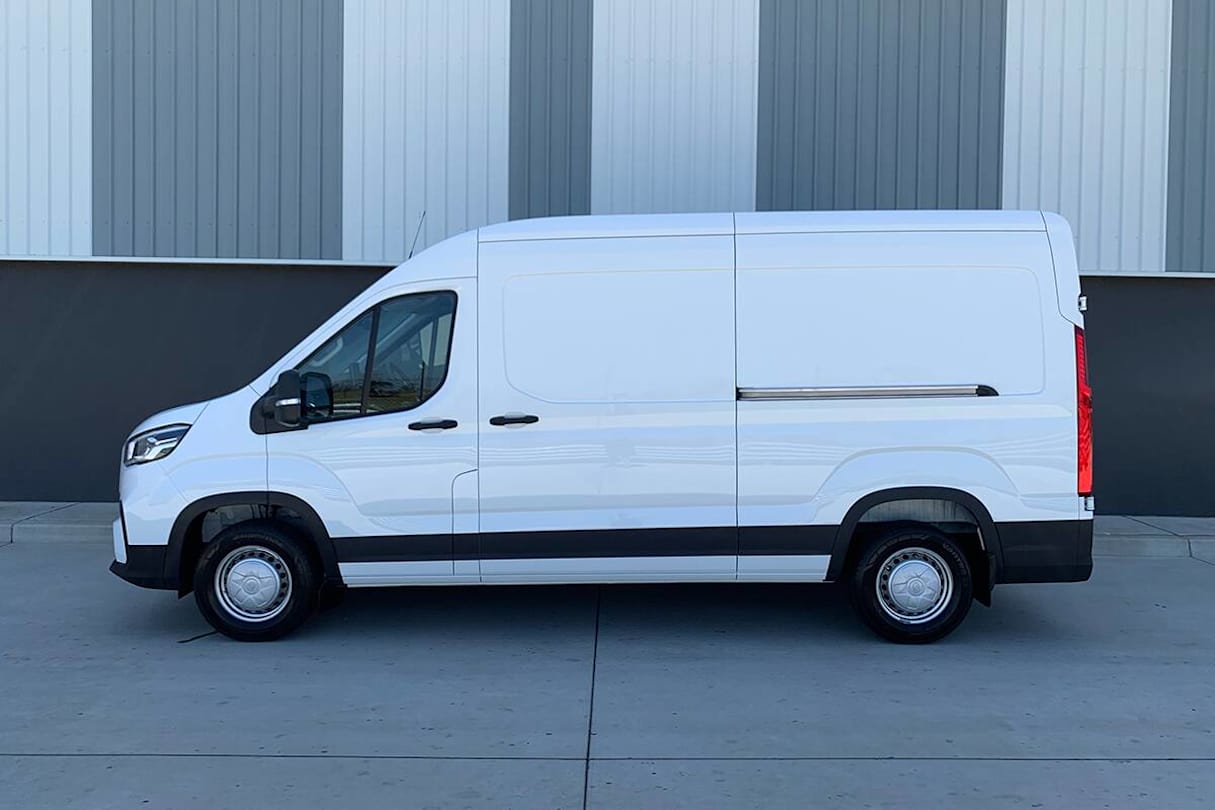
First, here’s a table of the body dimensions - note, these are for the van and bus models only:
Mid Wheel Base Mid Roof | Long Wheel Base | Long Wheel Base | |
Length (excluding rear camera) | 5546mm | 5940mm | 5940mm |
Wheelbase | 3366mm | 3760mm | 3760mm |
Width (including mirrors) | 2466mm | 2466mm | 2466mm |
Height (excluding rear camera) | 2555mm | 2535mm | 2755mm |
As you can tell, there is some variance between the models above, and obviously that translates to a difference in cargo capacity / carrying capacity. We’ve listed some of the van’s internal dimensions and stats below:
Mid Wheel Base Mid Roof | Long Wheel Base | Long Wheel Base | |
Length | 3019mm | 3413mm | 3413mm |
Width | 1800mm | 1800mm | 1800mm |
Width between wheel arches | 1366mm | 1366mm | 1366mm |
Height | 1792mm | 1792mm | 2014mm |
As you can see, there are step differences between the three vans, with all three able to easily swallow a pair of Australian standard pallets (1175mm x 1175mm) in the back.

What does each translate to in terms of the cargo cubic metres and payload levels for these vans? We’ll cover that in the next set of boxes.
Mid Wheel Base Mid Roof | Long Wheel Base Mid Roof | Long Wheel Base High Roof | |
Payload capacity | 1500kg | 1670kg (manual) 1640kg (auto) | 1640kg (manual) 1620kg (auto) |
Cargo capacity (cubic metres) | 9.66m3 | 10.97m3 | 12.33m3 |
Gross vehicle mass (GVM) | 3800kg (Mid Wheel Base) / 4000kg (Long Wheel Base) | ||
Gross combination mass (GCM) | 6000kg | ||
Towing capacity | 750kg unbraked / 2800kg braked | ||
Apologies for the data overload there, but now we’ve got all the facts and figures out of the way, we can move on to some of the more practical considerations in the cabin of the Deliver 9.
How practical is the space inside?
Let’s start with the cabin area. If you’re going to be driving a van like this day-in, day-out, you want to know that it has the cabin smarts and design attributes to make for a pleasant space.
And the Deliver 9 is packing the goods, really, when it comes to the cockpit, which is mostly really well considered, and shows an improvement in terms of ergonomics and controls compared with some of the brand’s older vehicles.
There's a 10.1-inch media screen, which is the largest in the class. It has Apple CarPlay and Bluetooth phone connectivity plus 2xUSB connections, but there is no Android Auto phone mirroring. It is an eye-catching thing, but it has some operation gremlins.

For instance, it had a tendency to revert to a radio station when CarPlay was connected but reverse was engaged. Or, it would do that - blare some FM radio - just before a phone call connected. And also, when you disconnect your phone from the USB cable, the radio volume will be much higher, meaning a few surprisingly loud moments. And the phone call volume is a bit too muted, even with the car's stereo on max vol, and a phone all the way up, too. Plus it’s hard to figure out how to get back to Apple CarPlay if you hit the home button or do anything else through the screen.
All of these issues may be addressed with a software update, and we hope that’s the case, and it has been in the LDV D90 and T60.
The reversing camera is a top-mount wide angle lens that offers a decent view of your surroundings, but the quality of the image is quite poor, with contrast issues and pixelation on screen. But is it clear enough to see what’s what when you’re reversing? You bet. And there are rear parking sensors too.

As for other cabin attributes, the Deliver 9 has big door pockets with bottle holders and additional storage, plus there is a flip-down section with an elasticated strap for documents and a pair of cup holders in the middle seat area. There are also high-mounted cup/bottle holders on the outer edges of the dashboard, which is something tradies will definitely appreciate.
The dash also features a curvy shelf section for the passenger side, though unlike some rivals, there are no dash-top storage trenches for loose items. There is, however, an overhead folder holder which is very handy for light items.
There are dials for the fan and air conditioning controls which are much simpler to use than in the G10 van, and there are a few hard buttons above that for Eco mode, Power mode, lane departure and AEB. The screen doesn’t have a dial for volume control, which is annoying.
The driver is treated to a clear set of dials and a 4.2-inch digital instrument cluster with a digital speedo, and while the steering wheel is a hard plastic one, the design and controls are pretty easy to come to grips with, though the lack of reach adjustment for the steering wheel (angle/tilt/rake adjust only) means getting your perfect position mightn’t be possible.

That said, the driver gets adjustment for the seat (eight way) and an armrest on the inner side, but there’s no armrest on the outboard edge - we know it gets in the way if you’re climbing in and out a lot, but on longer drives, you can find yourself leaning a bit too far to the right to rest your arm on the door.
The bench seat is wide enough for two adults, but forget taking your kids with you if they’re young - there are no ISOFIX or top-tether points for baby/child seats. But under that bench there is a hidden storage section, with the bases of both seats opening independently.
In the back of the van the neat chequerplate vinyl finish on the floor continues, and there are eight integrated floor lashing points for securing loads. There are no wall-mount points, though. More on the load space in the Tradie Driving section below.
One thing that we noted from the outside, but not the inside, is that the panel welding divots were very noticeable in certain light, but not in others. From one angle, our videographer said he though there were huge dents in the back panels - but from a different spot they weren’t discernable at all.

What are the key stats for the engine and transmission?
The LDV Deliver 9 is a simple offering in the Aussie market when it comes to powertrain options. There’s just the one engine option, but two transmission choices.
The motor is a 2.0-litre turbocharged four-cylinder diesel engine, producing 110kW of power (at 3500rpm) and 375Nm of torque (at 1500-2400rpm). Those figures are fine for the segment, but set no new benchmarks in terms of horsepower.

Depending on the model you can choose between a six-speed manual or six-speed torque converter automatic gearbox - some drivers will rejoice at the auto not being a dual-clutch, meaning less thinking when you’re manoeuvring at lower speeds.
The Deliver 9 sold in Australia is rear-wheel drive only (RWD/2WD). In other markets you can get it as a front-wheel drive (FWD), but there’s no option for an all-wheel drive (AWD) or four-wheel drive (4WD) version. If you need any of those other options, you’re going to need to shop with a different brand. Ford Transit, Mercedes Sprinter and Renault Master offer FWD and RWD, while VW has FWD, AWD and RWD in the Crafter.
How much fuel does it consume?
This part of the market has no legal requirement to state an official combined cycle fuel consumption figure. So it’s hard to gauge how the Deliver 9 goes against its claim. There simply isn’t one.
That also makes it hard for potential customers to figure out the total cost of ownership (TCO) of a vehicle that will be used for business. A shame really.
And while our test was hardly laboratory spec, we managed to cover hundreds of kilometres in the Long Wheel Base Mid Roof model, including highway, urban, back street and country road driving. We also did some of that driving with a load in the back.

On test we saw a real world consumption figure of 10.7L/100km, which was measured at the pump. The dashboard readout was showing 10.1L/100km.
Fuel tank capacity is 80 litres for all Deliver 9 van derivatives. There is no long range fuel tank option.
Because of the rules of this segment, there’s also no requirement to state a CO2 figure - we can only guess at the g/km in our market. But we do know that the engine is a Euro 5 spec, with an automatic diesel particulate filter (DPF) system and engine start-stop technology. There is no Adblue after treatment, though.
Curious about other fuel options? There’s no petrol, forget LPG or natural gas for Australia, a hybrid or plug-in hybrid (PHEV) isn’t expected here, and while there will be an electric version, it’s not confirmed for Australia just yet.
Warranty & Safety Rating
What safety equipment is fitted? What safety rating?
Don’t expect an ANCAP crash test safety rating for the LDV Deliver 9. It’s rare that these larger vans are tested locally or internationally, but the brand does offer a decent amount of safety technology across the range.
Standard is low speed auto emergency braking (AEB) that works up to 30km/h, but sadly doesn’t include pedestrian or cyclist detection. There is a lane departure warning (LDW) system, which works between 60km/h and 150km/h. The system doesn’t offer active steering assistance. There is adaptive cruise control for the auto models, but manuals have regular cruise.
You can option blind spot monitoring as part of a pack ($1500 - also includes keyless entry and push-button start), but there’s no rear cross-traffic alert system.

All vans and buses come with a reversing camera system and rear parking sensors, but none have front parking sensors (not that you really need them, the forward vision is very good). All models have electronic stability control, hill hold assist, electronic brake force distribution, and anti-lock brakes with brake assist.
There are no rear seats, so therefore no child seat attachment or ISOFIX baby seat tethers.
The LDV Deliver 9 range has six airbags - dual front, front side and front curtain airbag protection - in all derivatives.
What does it cost to own? What warranty is offered?
This could be the part of the story that stops you from considering an LDV. Why? Because it comes with a shorter warranty than most of its rivals, and that may matter to you if you intend to hang on to your van for a longer period of time.
LDV backs the Deliver 9 with a three-year/160,000km warranty plan. That is shorter than Ford’s Transit, Mercedes’ Sprinter and VW’s Crafter - all of which have five-year/unlimited kilometre coverage. The Renault Master has five years/200,000km. The Fiat Ducato has three year/200,000km.
Now there is an argument that business buyers might be more likely to turn over their van after 36 months anyway, but even so, meeting the industry norm for warranty cover would surely entice more buyers to the LDV brand.

This time around, though, the company has finally added a capped price servicing plan - all of their other models have been a bit unknown in terms of ownership costs, but the company now has a three-year/95,000km capped price plan that has a total cost of $1895 including GST. The intervals are: preliminary check-up - 5000km; then every 12 months/30,000km, whichever occurs first.
The Deliver 9 comes with roadside assistance to the equivalent of the warranty: so, three years/160,000km.
Worried about LDV problems? If you have concerns about reliability, resale, ownership, engine problems, transmission problems, just want to see some FAQ about the brand or its products, head to our LDV problems page.
What's it like as a daily driver?
Hardly anybody chooses a van like this as a daily driver. Unless they are looking for a van to convert to a camper, or if they just like vans (I get it).
But the surprising thing to me is that the Deliver 9 is surprisingly easy to drive, so just about anyone could easily slide in behind the steering wheel and get where they need to go. They might even enjoy themselves while doing it.
That’s because the Deliver 9 is really quite well sorted in terms of its driving manners when unladen. I did several hundred kilometres in this vehicle without weight in the cargo area, and was impressed by many attributes of the drive experience. I’ve driven all the vans in this segment, and the LDV drives as good as any of them, and no worse than any of them.

The ride comfort and compliance was very good, only ever getting upset over large potholes, but never feeling skittish or lumpy in the way it coped with bumps. It runs a Macpherson strut front suspension setup and leaf springs at the rear, and while it hasn’t been tuned for local conditions, it handled the ones we put it through just fine.
The hydraulic power steering is decently weighted and easy to judge, with decent feel through the wheel, too. You might notice the steering wheel jostling in your hands more than some of its rivals, but it’s never violent.
The engine is urgent enough in its response, with decent pulling power from a standstill and even the engine’s start-stop system didn’t interrupt the drive experience too much. In traffic it cut the engine at a stop, and rapidly restarted and was ready to go as soon as brake pedal pressure was let off.
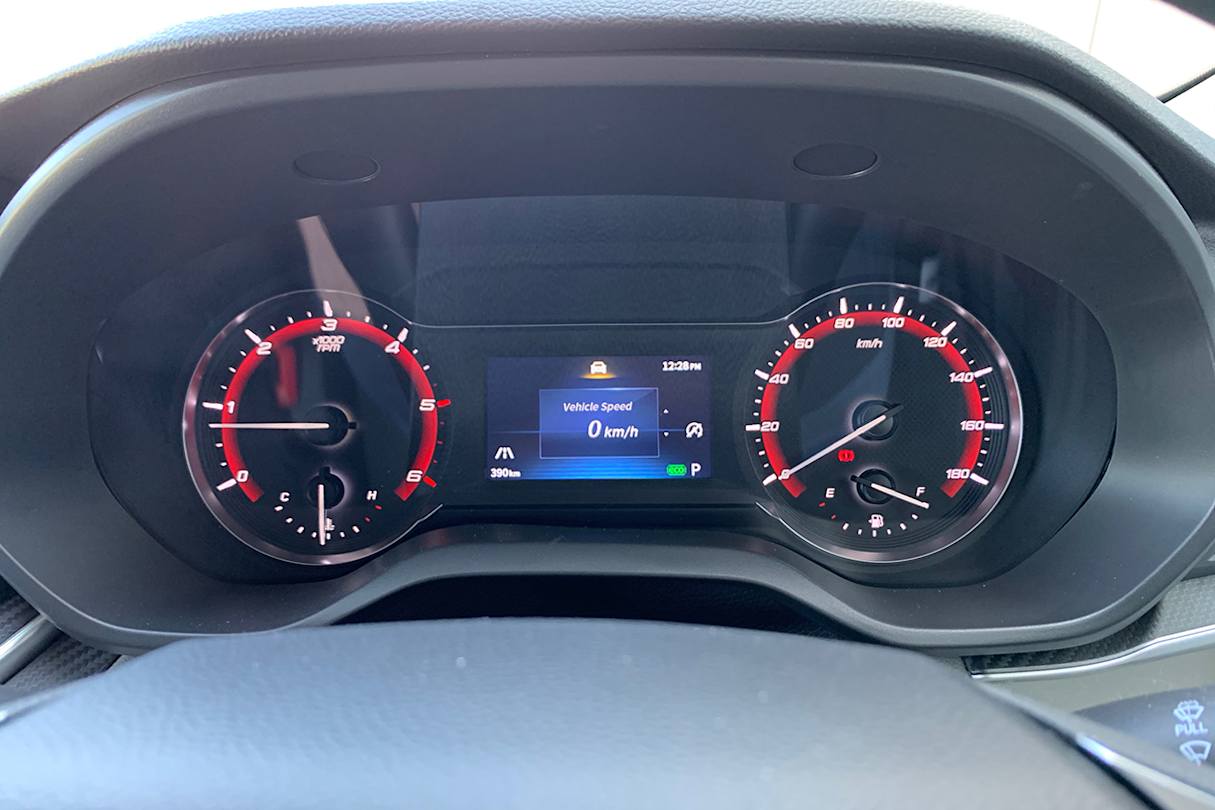
The six-speed automatic fitted standard to this size of van was well behaved, too. The shifts were smooth and smart, with a good logic to the way the gearbox behaved up hills, on the open road, and around town. It even managed hill descents easily, holding gears and allowing a level of engine braking.
All told, the daily driver experience was really good. For a vehicle of this size, it really has that “shrinks around you” feel to it.
What’s it like for tradie use?
Not for the first time, we hit up our mates at IWP Training - a heavy lifting and forklift training specialist south of Wollongong - to load up.
The payload limit for this particular test van is 1640 kilograms, and we put in 1400kg of mixed items (a steel girder on a pallet, and a pallet with a cage of chain and steel rope) in the back.
The load-in process was a bit tight on the kerbside door, with the side door measurement (1269mm) just allowing enough room for the pallet (1165mm) with some overhang. The masts of the forklift as well as short tines made this a bit more difficult than it otherwise would be. No issues with side clearance height-wise, as there’s 1570mm to play with.
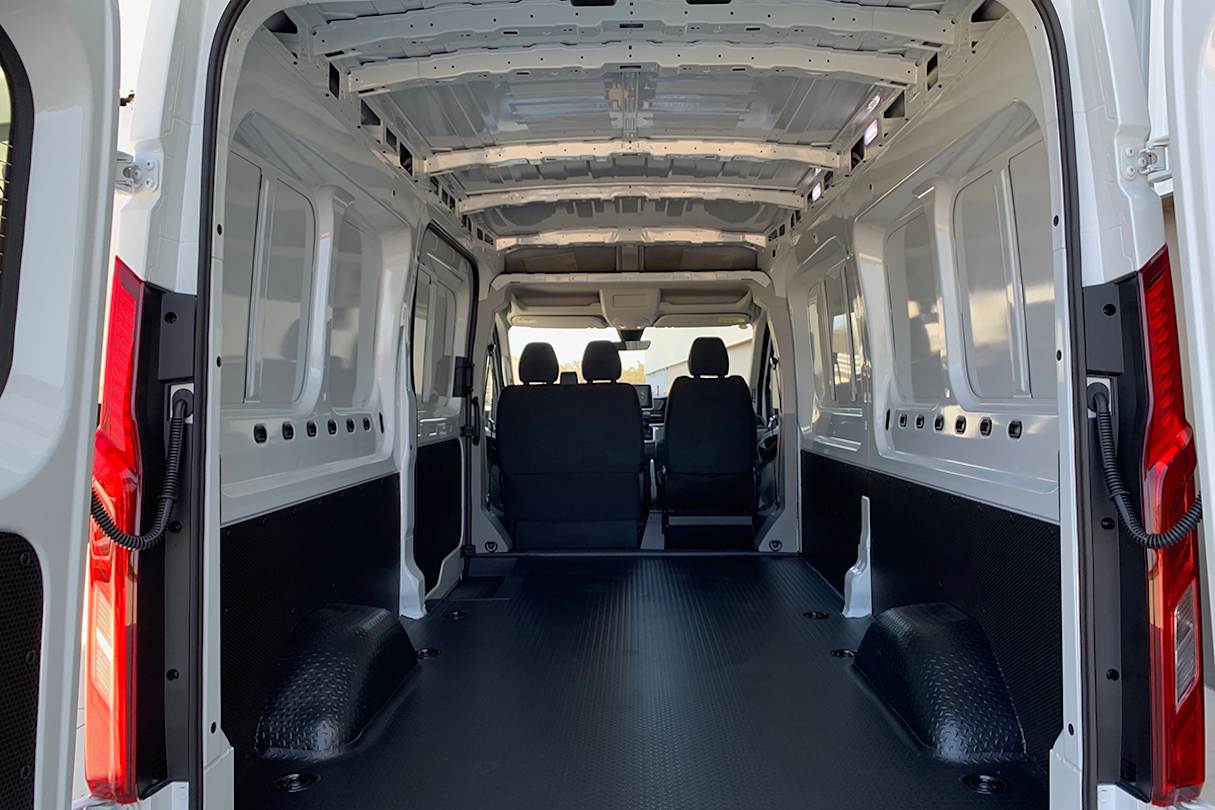
The rear barn doors were open to the full 180-degree stretch - though I would warn that unlike some other vans, the hinges aren’t as failsafe (there is no locked two-stage opening sequence) and if you’re in a narrow driveway the door could easily swing in a gust of wind. Just be mindful of that.
But we opened it all the way up, exposing a 1570mm wide and 1656mm tall gap to make use of. Plenty of space, there, and with 1792mm of standing room in the cargo area, it’s too hunched a job to secure the load down using the eight in-built lashing points (which were pretty well located for a task like this).
The fact the Deliver 9 comes with a decent vinyl flooring which even covers the wheel-arches was noted as a positive, as was the sound-absorbing lining panels on the inside of the cargo area, and the LED lighting, too.
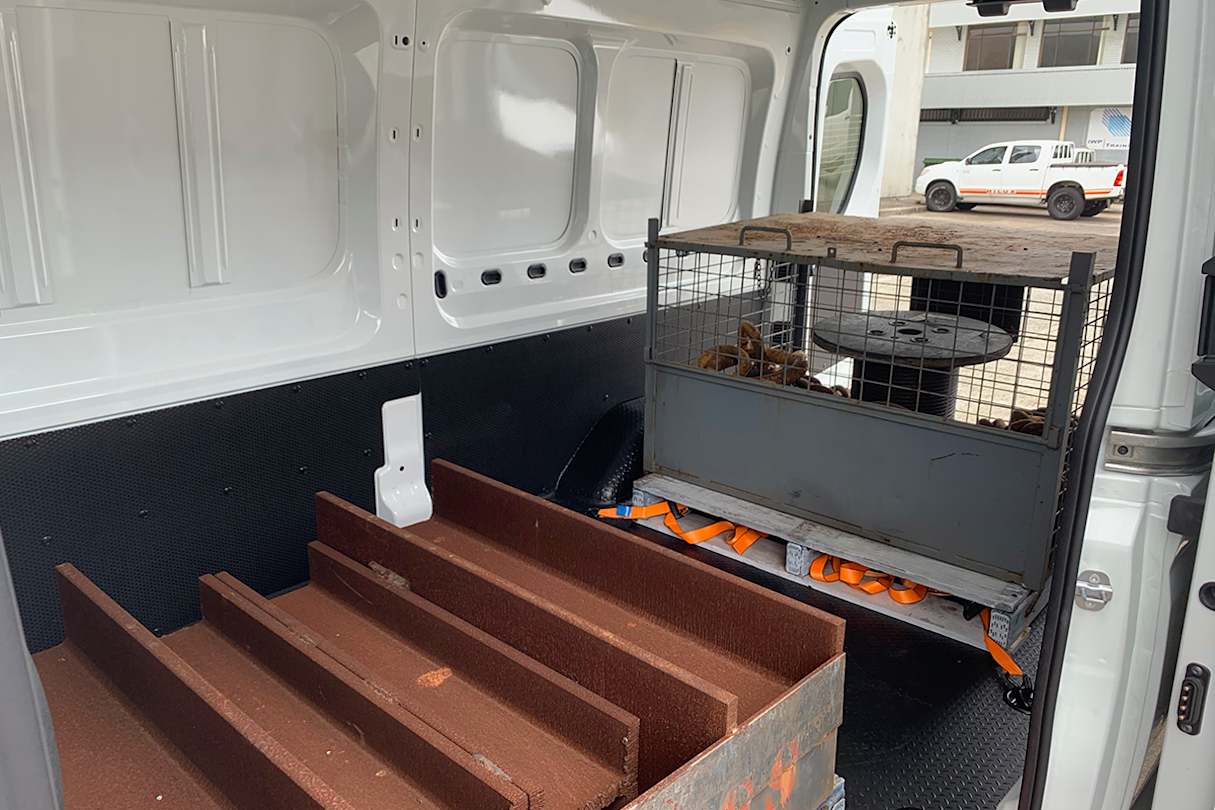
All told, the mass we added was a lot, but the van didn’t show it. The body only dropped about 70mm at the rear, and the front didn’t do the praying mantis pose, either.
On the road, the Deliver 9 really, er, delivered. It was still well sorted with the weight when it came to the ride, and even managed to iron out some of the smaller inconsistencies in the road surface thanks to the additional mass.
The steering was accurate and easy to judge, and aside from some road noise and the ping-ping-ping of rain on the roof and windscreen (and a bit of a hum from the rear wheel-arches when the road was wet), it was easy progress for the LDV.
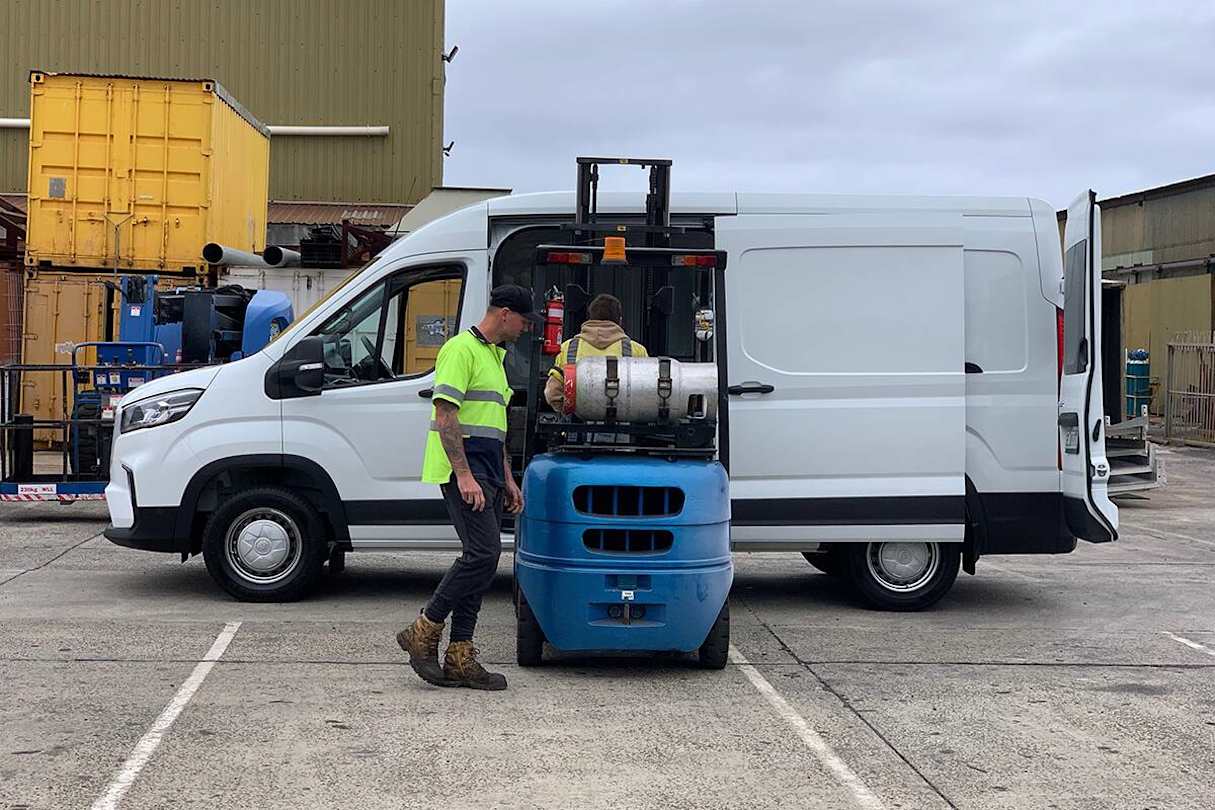
The engine felt up to it, despite not being a powerhouse based on the engine specs. That said, a lot of diesel engines like this feel best when they’re made to work, and the 2.0-litre turbo-diesel unit still offered decent progress and power when required. Again, the six-speed auto was mostly good, but we did notice that it could get a little confused with mass on board, shifting with a bit more of a haphazard resolve under light-to-mid throttle.
One thing we would suggest buyers take note of is the brake pedal feel. It’s quite wooden and needs a bit of pressure, particularly when loaded, and it just means you might need to reconsider your stopping distances, as the reaction from the four-wheel discs (308mm ventilated discs with twin-piston front calipers, 304mm solid disc single-pistons at the rear) was a little lacking.
It was all or nothing for us in terms of load testing, but it might have been a different story had we only had 700kg on board. Even so, with 1400kg (plus your 85kg reviewer) the Deliver 9 was commendable in its performance.

Verdict
If you want a budget-friendly new large van that doesn’t feel cheap in the slightest, you really cannot go past the 2021 LDV Deliver 9 range. There are multiple models to choose from, and once the brand fleshes out the options to incorporate bulkhead / mesh cage, driver’s side sliding doors, glazing options and more, it will offer a compelling alternative to the mainstream names in this segment - provided you aren’t worried about the shorter-than-normal warranty cover. It is built to a price, but that price is its biggest advantage.
Thanks again to our mates at IWP Training for helping out with this test.
Pricing Guides



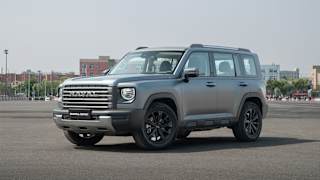

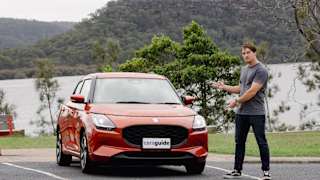

.jpg)
.jpg)
.jpg)
.jpg)
.jpg)
.jpg)
.jpg)
.jpg)

.jpg)
.jpg)